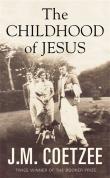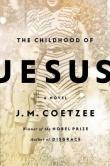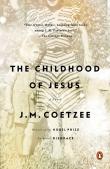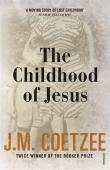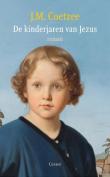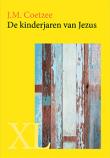AustLit

Latest Issues
AbstractHistoryArchive Description
David is a small boy who comes by boat across the ocean to a new country. He has been separated from his parents, and has lost the piece of paper that would have explained everything. On the boat a stranger named Simón takes it upon himself to look after the boy.
On arrival they are assigned new names, new birthdates. They know little Spanish, the language of their new country, and nothing about its customs. They have also suffered a kind of forgetting of old attachments and feelings. They are people without a past.
Simón's goal is to find the boy's mother. He feels sure he will know her when he sees her. And David? He wants to find his mother too but he also wants to understand where he is and how he fits in. He is a boy who is always asking questions.
The Childhood of Jesus is not like any other novel you have read. This beautiful and surprising fable is about childhood, about destiny, about being an outsider. It is a novel about the riddle of experience itself.' (Publisher's blurb)
Notes
-
Dedication: for DKC
Publication Details of Only Known VersionEarliest 2 Known Versions of
Other Formats
- Also e-book and sound recording.
Works about this Work
-
y
 Metaphysical Exile : On J.M. Coetzee's Jesus Fictions
Oxford
:
Oxford University Press
,
2021
22006425
2021
multi chapter work
criticism
Metaphysical Exile : On J.M. Coetzee's Jesus Fictions
Oxford
:
Oxford University Press
,
2021
22006425
2021
multi chapter work
criticism
'This is the first detailed interpretation of J. M. Coetzee’s “Jesus” trilogy as a whole. Robert Pippin treats the three “fictions” as a philosophical fable, in the tradition of Plato’s Republic, More’s Utopia, Rousseau’s Emile, or Nietzsche’s Thus Spoke Zarathustra. Everyone in the mythical land explored by Coetzee is an exile, removed from their homeland and transported to a strange new place, and they have all had most of the memories of their homeland “erased.” While also discussing the social and psychological dimensions of the fable, Pippin treats the literary aspects of the fictions as philosophical explorations of the implications of a deeper kind of spiritual homelessness, a version that characterizes late modern life itself, and he treats the theme of forgetting as a figure for modern historical amnesia and indifference to reflection and self-knowledge. So, the state of exile is interpreted as “metaphysical” as well as geographical. In the course of an interpretation of the central narrative about a young boy’s education, Pippin shows how a number of issues arise, are discussed and lived out by the characters, all in ways that also suggest the limitations of traditional philosophical treatments of themes like eros, beauty, social order, art, family, non-discursive forms of intelligibility, self-deception, and death. Pippin also offers an interpretation of the references to Jesus in the titles, and he traces and interprets the extensive inter-textuality of the fictions, the many references to the Christian Bible, Plato, Cervantes, Goethe, Kleist, Wittgenstein, and others. Throughout, the attempt is to show how the literary form of Coetzee’s fictions ought to be considered, just as literary—a form of philosophical reflection.'
Source : publisher's blurb
-
“Let Us Keep Going and See What Comes up” : The Poetics of Study in J. M. Coetzee’s The Childhood of Jesus
2019
single work
criticism
— Appears in: Ariel , April - July vol. 50 no. 2-3 2019; (p. 163-190) 'This article argues that J. M. Coetzee’s The Childhood of Jesus embodies a poetics of study. Noting Coetzee’s sustained interest in educational thought, the article places Coetzee’s enigmatic novel in dialogue with Giorgio Agamben’s idea of study, which brings together the latter’s foundational thinking on infancy, impotentiality (Agamben’s term for the distinctly human capacity to withhold a certain potential), and the messianic. It shows how The Childhood of Jesus prompts its readers towards the experimentative pursuit of infinite possibilities for thought in the present moment, inviting a different mode of reading than the future-directed Derridean/Levinasian ethics of hospitality through which Coetzee’s work is often read. In showing how Coetzee’s late work resonates with Agamben’s thought rather than Derrida’s, the article highlights the emergence in Coetzee’s fiction of a view of learning (and, analogously, of reading) that is characterized by irresponsibility and the idea of study with no presupposed end in sight—a dynamic that is quite distinct from an ethics of reading guided by responsibility towards a presupposed “other” to come.' (Publication abstract) -
The Creature-Feeling as Secular Grace : On the Religious in J.M. Coetzee’s Fiction
2018
single work
criticism
— Appears in: Literature and Theology , March vol. 32 no. 1 2018; (p. 69–86)'In this article, I argue that the epiphanies in J.M. Coetzee’s fiction can be read as literary enactments of the ‘creature-feeling’, a feeling of absolute dependence on one’s creatureliness that was first described by the theologian Rudolf Otto. I begin with a discussion of the creature-feeling with reference to William James’ The Varieties of Religious Experience (1902) and Rudolf Otto’s The Idea of the Holy (1917). Critics have observed that Coetzee’s fictions suggest shared embodiment as the basis for humans’ ethical responsibility towards other humans and towards animals, and have focussed on Emmanuel Lévinas when addressing theological influences on Coetzee’s non-rational ethics. Bringing James and Otto into the discussion allows me to account for those epiphanic moments in Coetzee that do not overlap with the ethical or the aesthetic, moments in which characters experience what I call secular grace. Coetzee is not the first to enact the creature-feeling: he reworks earlier enactments by James Joyce.' (Publication abstract)
-
'耶稣的童年' 中的后现代难民书写
The Childhood of Jesus : A Postmodern Refugee Novel
2017
single work
criticism
— Appears in: Contemporary Foreign Literature , vol. [2017] no. 4 2017; (p. 76-84)'J. M. Coetzee’s fourth Australian novel The Childhood of Jesus (2013) has all signs of a realistic refugee novel with its use of simple language, lucid plotline and stock characters. But it is another of Coetzee’s postmodern projects with its striking contingent of metafictional devices. This essay uses Jean-Francois Lyotard’s theory of the postmodern and attends to three metafictional details in the novel——the naming of Novilla, the boy protagonist’s handover to an alleged mother, and his "magical cloak of invisibility"——to delve into Coetzee’s allusive representation of the experience of displacement of two refugees, Simon and particularly David. It is contended that The Childhood of Jesus, through a postmodern representation of the double traumas of a child refugee who has lost his home and loved ones in war, constitutes a testament to Coetzee’s penetrating engagement with the global refugee problem in the 21st century.'
Source: CAOD database.
-
Beyond the Literary Theme Park: J. M. Coetzee's Late Style in The Childhood of Jesus
2017
single work
criticism
— Appears in: J. M. Coetzee's The Childhood of Jesus : The Ethics of Ideas and Things 2017; (p. 187-209)
-
To Hell With Self-Help
2013
single work
review
— Appears in: The Monthly , March no. 87 2013; (p. 48-49)
— Review of The Childhood of Jesus 2013 single work novel -
[Review] The Childhood of Jesus
2013
single work
review
— Appears in: The Courier Mail , 2-3 March 2013; (p. 22)
— Review of The Childhood of Jesus 2013 single work novel -
Gospel According to David
2013
single work
review
— Appears in: The Sydney Morning Herald , 2-3 March 2013; (p. 30) The Canberra Times , 2 March 2013; (p. 22)
— Review of The Childhood of Jesus 2013 single work novel -
A Restless Questing
2013
single work
review
— Appears in: The Age , 2 March 2013; (p. 22)
— Review of The Childhood of Jesus 2013 single work novel -
[Review] The Childhood of Jesus
2013
single work
review
— Appears in: The Sunday Age , 10 March 2013; (p. 14) The Sun-Herald , 10 March 2013; (p. 13)
— Review of The Childhood of Jesus 2013 single work novel -
World of Words
2012
single work
column
— Appears in: The Sydney Morning Herald , 28-29 December 2012; (p. 22) The Canberra Times , 29 December 2012; (p. 15-16) The Saturday Age , 29 December 2012; (p. 22-23) Jane Sullivan nominates the best Australian and overseas published books for 2013. -
A Pair of Ragged Claws
2013
single work
column
— Appears in: The Weekend Australian , 2-3 February 2013; (p. 19) -
Monument to Moral Symmetry
2013
single work
column
— Appears in: The Weekend Australian , 9-10 March 2013; (p. 20-21) -
A Ragged Pair of Claws
2013
single work
column
— Appears in: The Weekend Australian , 12-13 October 2013; (p. 19) -
Miguel de Cervantes and J.M. Coetzee : An Unacknowledged Paternity
2013
single work
criticism
— Appears in: Journal of Literary Studies , vol. 29 no. 4 2013; (p. 80-97) 'This article points to the 17th-century Spanish writer, Miguel de Cervantes, as one important literary predecessor of the contemporary South African writer, J.M. Coetzee, a relation that has generally passed unnoticed among critics. This relation is brought to the foreground in Coetzee’s most recent novel, The Childhood of Jesus (2013), but it also underlies his previous ones, Age of Iron (1998), Disgrace (2000), and Slow Man (2005), as well as his critical pieces, “The Novel Today” (1988) and the “Jerusalem Prize Acceptance Speech” (1992b), all of which contain echoes of Cervantes’s masterpiece, Don Quixote ([1605, 1615]2005). My argument is that the conflict between imagination and reality, the novel and history, central in Coetzee’s fictional and non-fictional production, needs to be re-examined as a fundamentally Cervantine one. The adventures and fate of Don Quixote lie behind Coetzee’s exploration of whether literature may be an effective and ethical guide in our dealings with reality, whether the ordinary may be transformed into the extraordinary, and of the relation between the literary imagination and the onslaughts of the real world.' (Publisher's blurb)

